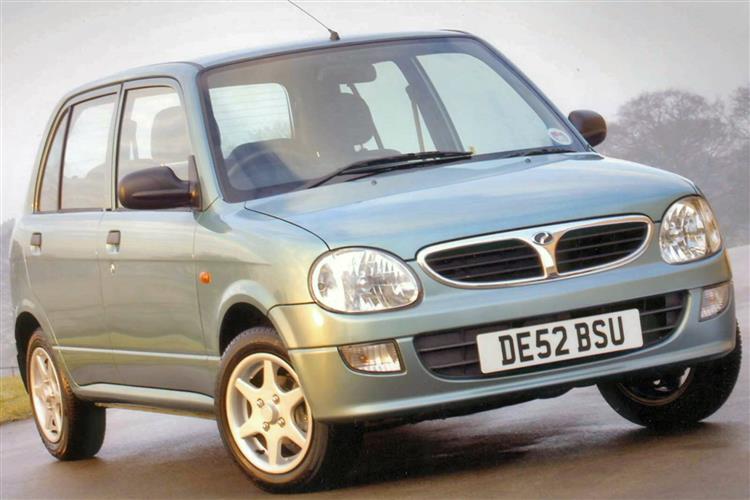GOOD STUFF? (some text hidden) --NONE--
BY ANDY ENRIGHT
Introductionword count: 102
Perodua certainly think they've hit on a winning formula. Offering the LIDL attitude to car selling, the Malaysian company have been piling them high and selling them cheap for some time now and with no little success. If you expect modern manners and refinement from a Perodua Kelisa, you're liable to be slightly disappointed but there is a school of thought that reckons that the latest crop of modern superminis are just that little bit po-faced. The Kelisa might be cut from old school cloth, but it's certainly a lot of fun and the value proposition is interesting, to say the least.
Modelsword count: 10
Models Covered: 5dr hatchback, 989cc [EX, GXi. EZi, SE Pack]
Historyword count: 195
For those of you looking to save the planet, it'll come as some reassurance that Perodua are past masters at recycling. The old Perodua Nippa was a reincarnated Daihatsu Mira and the Malaysians once again turned to Daihatsu when they needed a replacement citycar, the Kelisa being, in effect, a rebadged and rehashed Daihatsu Cuore. Introduced in 2002 at a knockdown price of £5,300, the Kelisa started winning friends straight from the get go although not enough for Perodua's liking, a price cut of over £300 on the entry level EX model sending it below £5,000. The range was facelifted in 2004, the restyle running to a redesigned rear end, bumper and a honeycomb grille as well as a few trim and equipment upgrades. What is more significant is that Britain's cheapest car got cheaper again - going down to £4,842 for the entry level model. In December 2005, Perodua announced SE packs for the Kelisa, which added an RDS radio/cassette player and reverse-park control to the specification of the EZi automatic and the GXi manual versions of the Kelisa. The range-topping EZi SE automatic model also comes with colour-keyed mirrors and exterior door handles.
What You Getword count: 409
The entry-level Kelisa EX gets Olympus upholstery with an option of metallic paint - although at £200, this represented nearly five per cent of the car's entire cost! Move up to the Kelisa GXi and you'll find improved upholstery plus protective side mouldings, while the range-topping Ezi automatic model came with all this and colour-keyed mirrors and exterior door handles. There's also a far wider range of colours available. The Kelisa is virtually as affordable as the car it originally replaced, the Nippa. This best-forgotten little runabout was notable only for the fact that at less than £5,000, it was the cheapest car you could buy in the UK. Not that this honour helped it much. Perodua had trouble shifting more than 1,500 units a year. The Kelisa just about retains the cheapest car title but it crucially also has the potential to appeal on criteria other than price. Yes, for much the same kind of cash as the Nippa, the Kelisa is a much better bet. Instead of being fundamentally based on a design (the Daihatsu Mira) which hailed back to the Eighties, its Cuore fundamentals mean it feels far more up to date. Or as up to date as a car based on something introduced in 1998 ever can be. All models came with the same 1.0-litre petrol engine and (unlike the Cuore) featured the same five-door bodyshape (no three-door option was offered). All also came fitted with twin front airbags, an engine immobiliser, power steering (crucial for a car like this) and a rear wash/wipe. Buyers who stretched to the GXi also got electric windows, central locking, metallic paint and cupholders. The automatic-only Ezi provided the full works in terms of equipment. Buying used as with buying new, the best advice, as with many cheap little cars, is to save your money and go for the entry-level model. To be frank, the quality of fit and finish, though adequate, is hardly of the best and plushing it up defeats the point to a certain extent. Careful design ensures that four adults can travel in reasonable comfort with adequate legroom and headroom, making even longer journeys viable. Wide-opening doors allow for easy access. You can even swallow a deceptively large amount of baggage should the need arise. Load volumes range from 155 litres VDA with the rear seats in place to 428 litres VDA with the bench folded. Unfortunately, a 50/50 split rear seat is not available.
To see the full road test text contact us on 0330 0020 227
Pictures (high res disabled)

Scoring (subset of scores)
Category: Small Runabouts
| Performance | |
| Handling | |
| Comfort | |
| Space | |
| Styling, Build, Value, Equipment, Depreciation, Handling, Insurance and Total scores are available with our full data feed. | |



